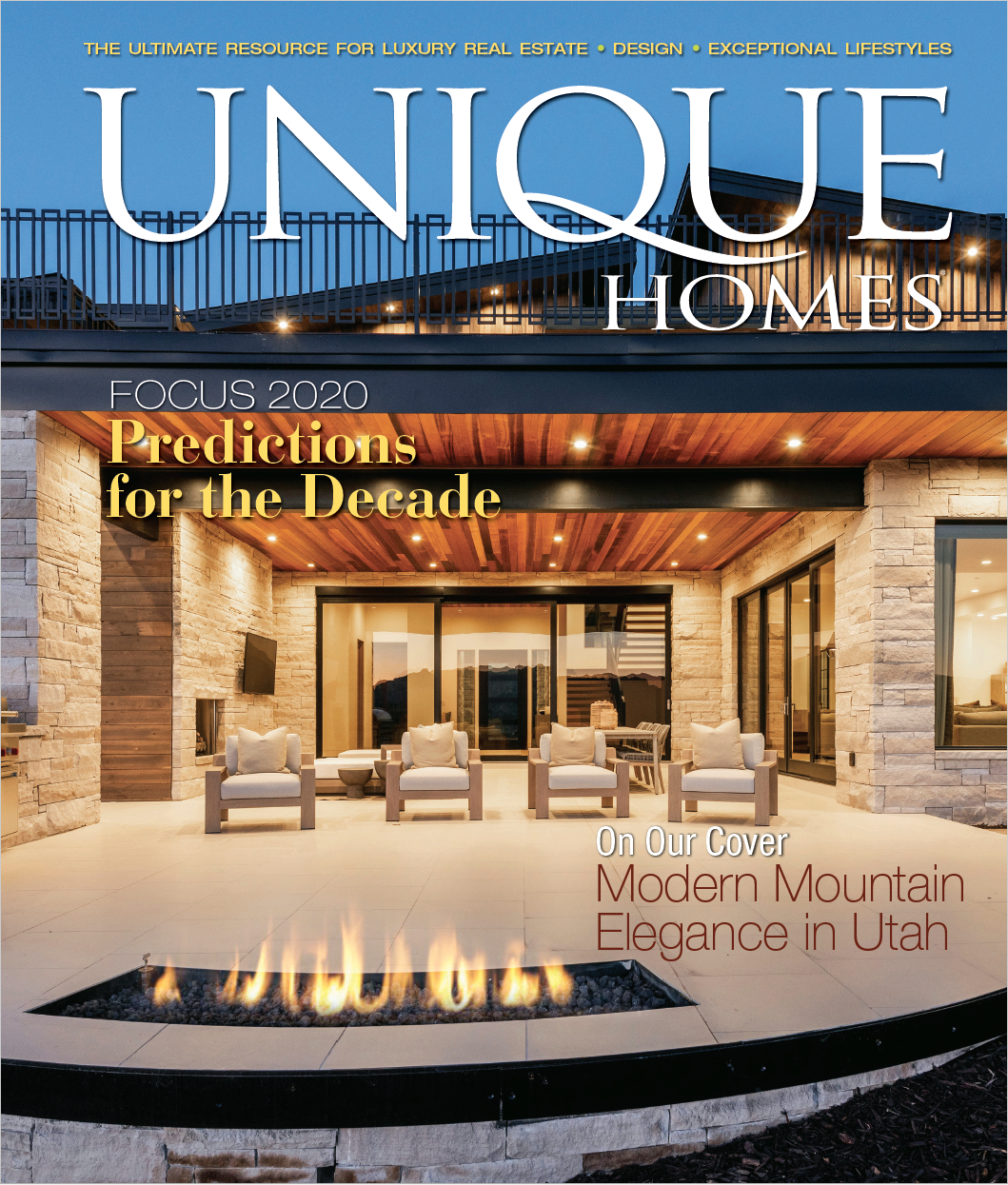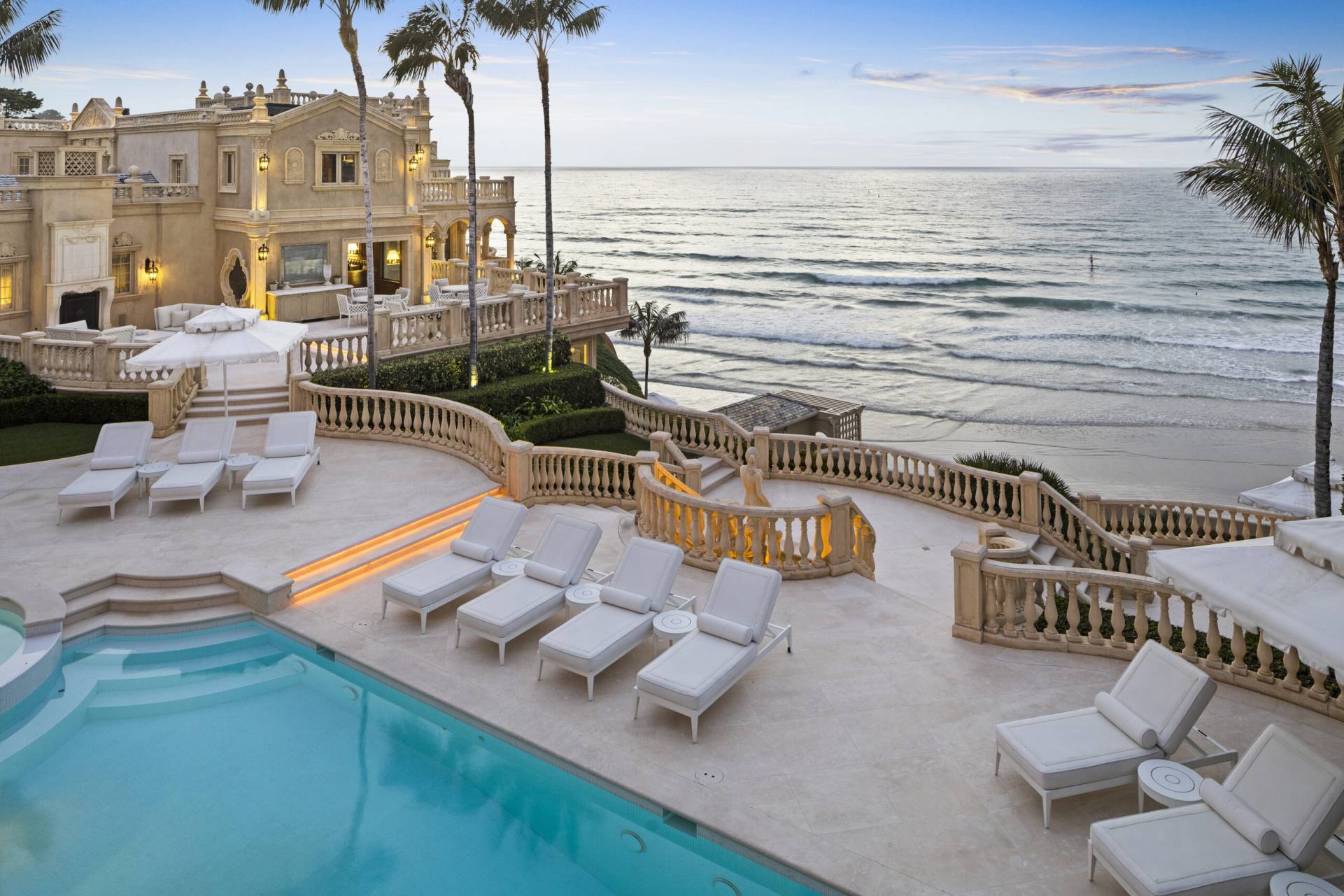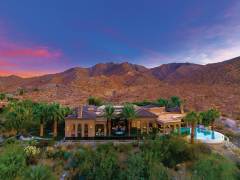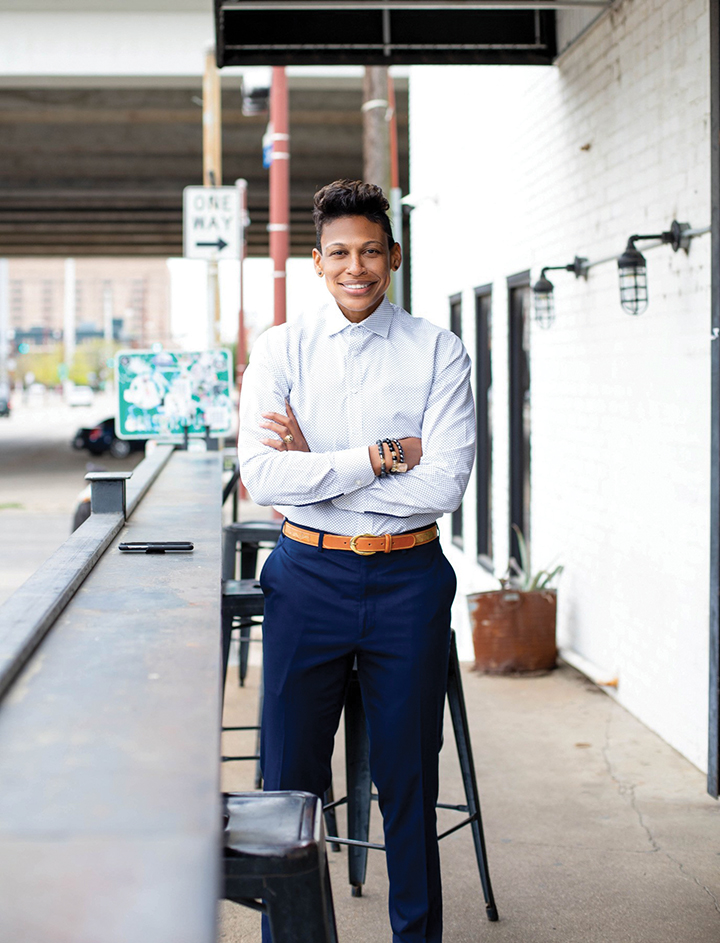
Khaliah O. Guillory, Owner of Nap Bar
A new set of businesses aims to help a sleep-deprived society relax and rejuvenate.
Nap bars. Upon hearing about this concept, various images come to mind, from a series of bedrooms with designated time slots for napping, to a pillowy oasis set in the clouds. While some ideas are more fantastical than others, the meaning behind many nap bar businesses and their missions is far more down to earth.
Whether naps are offered as a complimentary service or finely curated in a luxury setting, the importance of sleep has been reinvigorated by companies like these who know that the benefits of napping are nothing to sneeze (or snore) at in today’s world.
In recent years, with the rise of globalization and businesses running 24/7, productivity can and has for some time become a priority. Maria Jose Hernandez of recharj, a meditation studio headquartered in Washington, D.C., says the needs of the human body should take precedence, however.
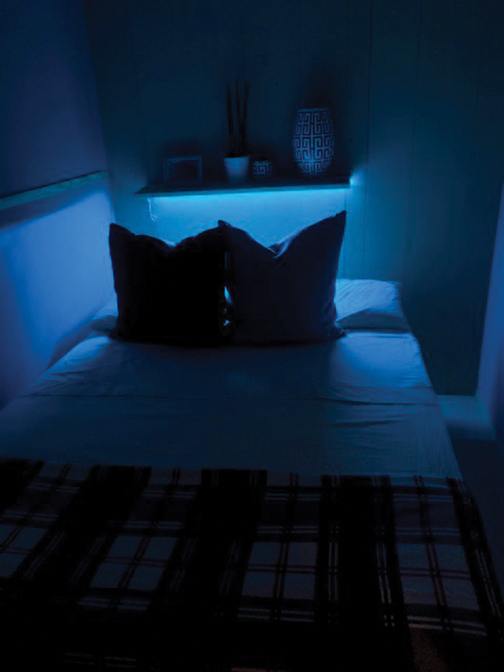
An avid lover of naps since childhood, Guillory developed her company as a way to keep herself from “taking naps in [her] car.”
Photos courtesy Nap Bar.
“Science has proven that sleep is how you are able to learn, retain memory — all these functions that we need to be productive.”
Many nap bars and sleep-oriented businesses have been developed by busy business professionals and entrepreneurs who found themselves suffering from sleep deprivation or sleep-related issues. For example, Khaliah O. Guillory was working at a Fortune 500 company and struggled with getting restful sleep when she was inspired to open Nap Bar in Houston. An avid lover of naps since childhood, she developed her company as a way to keep herself from “taking naps in [her] car,” and engage other young professionals to rest, relax and feel rejuvenated through a curated, white-glove napping experience.
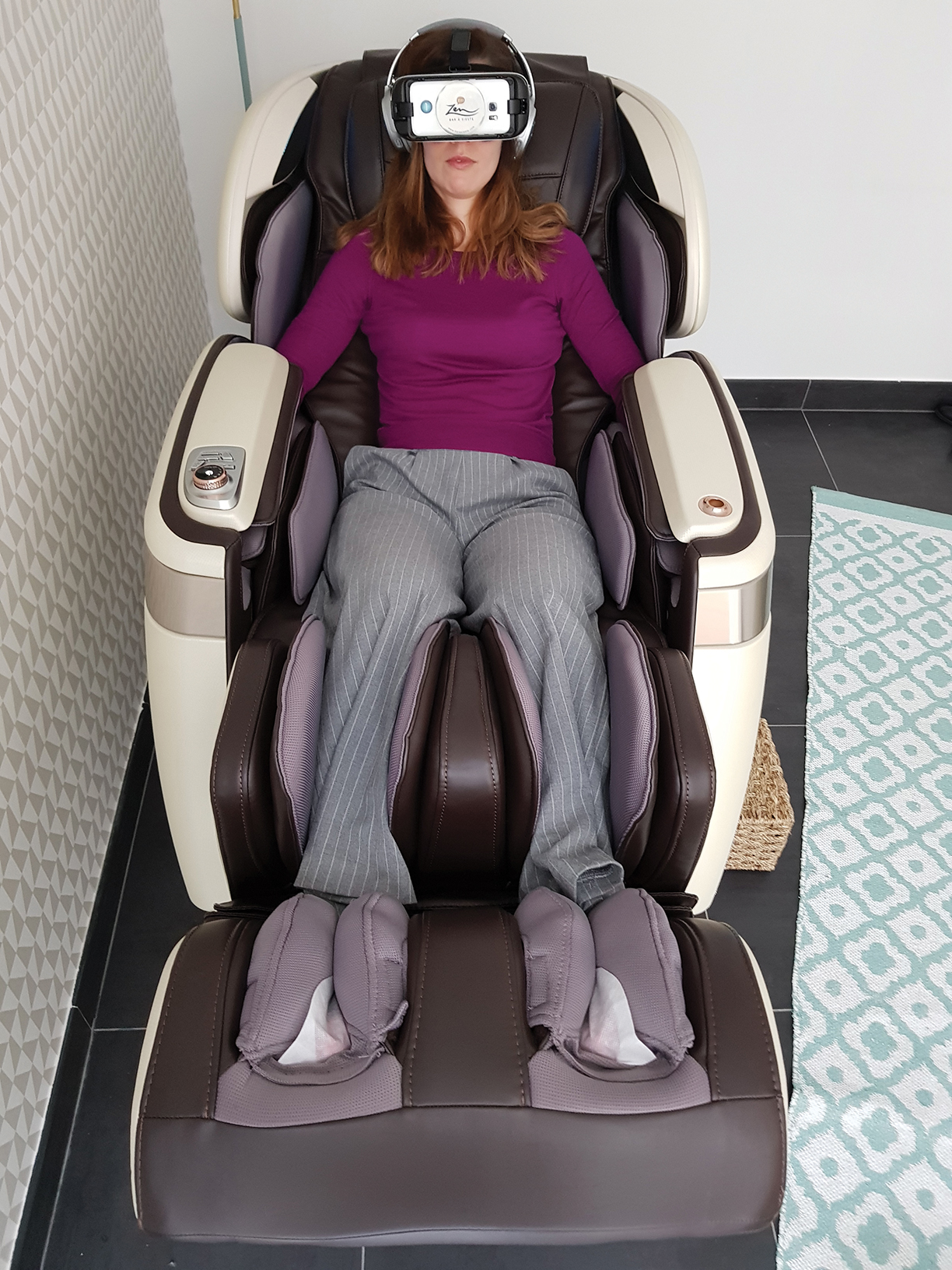
Top: Zen – Bar à Sieste Weightless Chair and VR.
Photos courtesy Zen – Bar à Sieste
Christophe Chanhsavang and his wife, Virginie, have had similar trials and tribulations. From Virginie’s corporate work hours to Christophe’s long hours of study, he realized from his experience working in the UK, China and Greece how much the concept of wellness was nonexistent in the French society. To avoid taking more naps in the office bathroom, Chanhsavang says they founded Zen – Bar à Sieste in 2011 in Paris and have since approached wellness from a holistic perspective by promoting sleep, nutrition, physical activity and mental health.
Professionals in the wellness industry have noted and continue to highlight the importance of sleep, which in turn has led to research and results into the benefits of napping. Guillory offers facts that have helped fuel the educational aspect of Nap Bar, including a NASA statistic that suggests shorter nap durations are better for reducing the impact of sleep inertia, a physiological state of impairment that affects cognitive and sensory-motor performance.*
Mauricio Villamizar, CEO of Pop & Rest in London, takes these findings a step further, noting how a lack of sleep can ultimately lead to disruptions in workflow. “Sleep deprivation is linked to lower productivity at work and it’s one of the main drivers of absenteeism … in the workplace. If we translate this into working days, we are looking at around 200,000 working days being lost each year in the UK only. In terms of economic consequences, it’s around £40 billion, almost 2 percent of the UK’s GDP,” Villamizar says.
Wellness overall has seen a resurgence in strength from businesses like these, as health has come to be the utmost priority of nations around the world. And just like there are many types of methods of getting and staying well, there are a variety of ways to nap.
Pop & Rest is a London-based wellness startup that connects locals and travelers with sleep and meditation pods, offering clients safe and secure spaces to unwind, rest, and work peacefully. According to Villamizar, customers can visit one of the company’s various locations throughout London and become immersed in a calm environment where the pods are situated.
“Once you are inside, your pod will be like a box that features a single bed, small table, along with accessories to change lights, music and the aroma,” he says, noting that everything is built to ensure the best relaxation experience. The pods are movable and soundproofed, and only require a power supply and WiFi connection to function, an enticing offer for companies looking to purchase these pods for their own offices.
The aforementioned Nap Bar curates a luxury napping experience for customers, which Guillory says is ensured by engaging all five senses. For sight, all of the custom suites are outfitted with mood lighting that is adjustable; for taste, a duo of raw juice shots are offered with rich nutrients and ingredients that aid in relaxing the body pre-nap, and waking it up post-nap; for hearing, exclusive brain waves are curated for each client and played inside suites that increases the release of melatonin in the body by 97 percent; and for smell, an aromatherapy pillow mist infused with lavender is available.
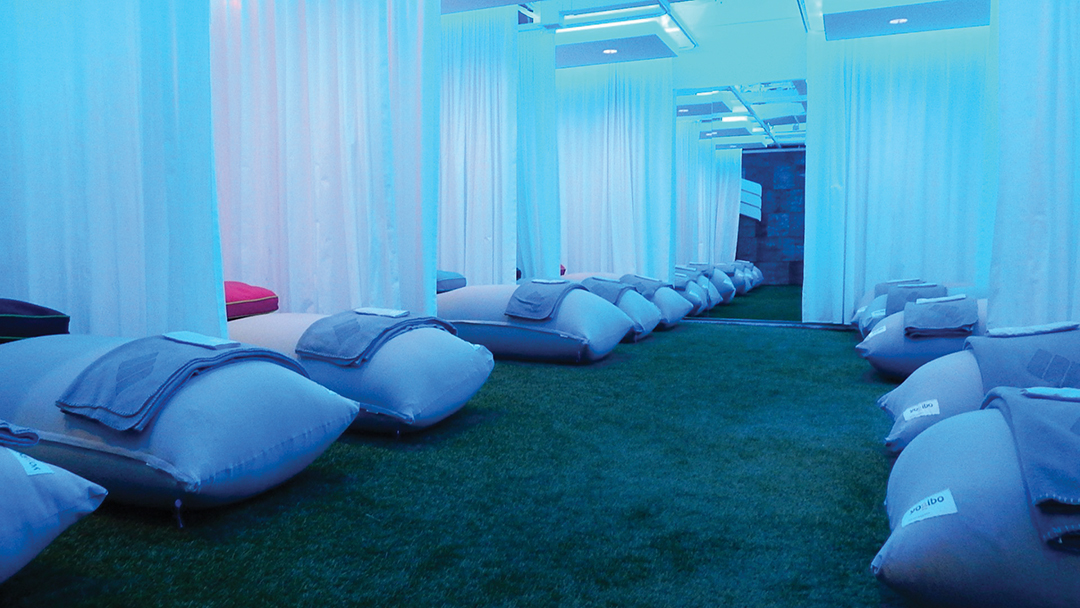
recharj – D.C. meditation room and class.
Photos courtesy recharj
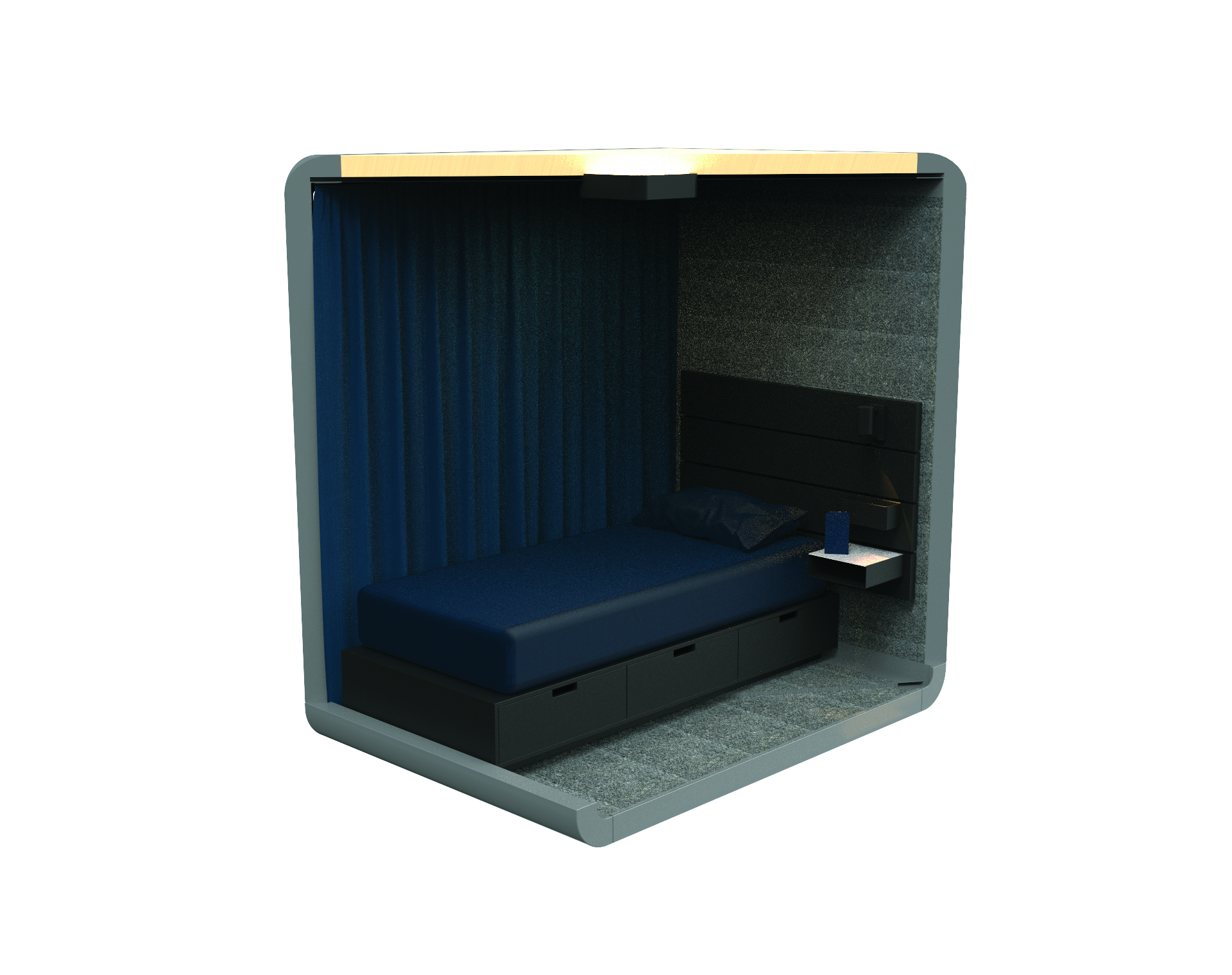
Pop & Rest sleep pod for napping.
Photo courtesy Pop & Rest.
The final sense, of touch, goes a step further, as all suites include an organic, locally sourced mattress, linens and sheets, and each room is painted with toxin-free paint. All of these inclusions are accompanied by a full-service concierge who will guide customers through the experience and help them on their wellness journey
According to Chanhsavang of Zen – Bar à Sieste, wellness is the future of humanity, a future he aims to advance with the Siesta Bar, which combines technological and traditional means of treatment for sleep deprivation. For nap services, customers can choose from a luxurious memory foam retreat, a zero-gravity massage chair or a Shiatsu bed; for aiding in relaxation and overall wellness, complimentary services include massages, virtual-reality meditation and even a fish spa.
As a meditation studio, recharj has been offering premier restorative practices to help clients, which includes the use of power naps. According to Hernandez, during open hours these power nap sessions are curated to be 25 minutes long and offered in large Yogibo chairs, a favorite for many. “A client once described them to me as if you’re laying down in a cloud,” Hernandez says, which only adds to the whole-body experience.
Binaural beats are also incorporated into the nap session, a type of music melody that registers at different frequencies that are meant to relax your body and get it ready for sleep. Overall, the studio aims to bring a sense of relaxation as well as mindfulness through meditation to its clients. “We offer workshops about mindful leadership, mindful communication and mindfulness in general,” Hernandez says, which in turn helps clients learn ways to de-stress and regain focus on whatever tasks lay ahead.
Unlike the typical fad that comes and goes, wellness is rooted in a deep need for comfort and stability. As we write this, we’re in the midst of a public health crisis, and brick and mortar locations may not be open. But there are ways to implement the wisdom of these businesses from your own home. Studios like recharj continue to offer online meditation classes, in an effort to keep a consistent schedule that is based solely on keeping well. And though the future is uncertain, businesses like Pop & Rest, Nap Bar and Zen – Bar à Sieste continue to work and create solutions for customers, from promoting online educational sessions and tips to developing applications, products and services for when businesses are fully up and running.
“Wellness is not just a fashion, but a fundamental trend in our societies,” Chanhsavang asserts. “Hopefully the nap services and related businesses will become a game-changer in the hospitality industry.”
*Source: NASA conducted a study on sleepy military pilots and astronauts and found a 26-minute nap increased productivity by 34 percent and alertness by 54 percent.
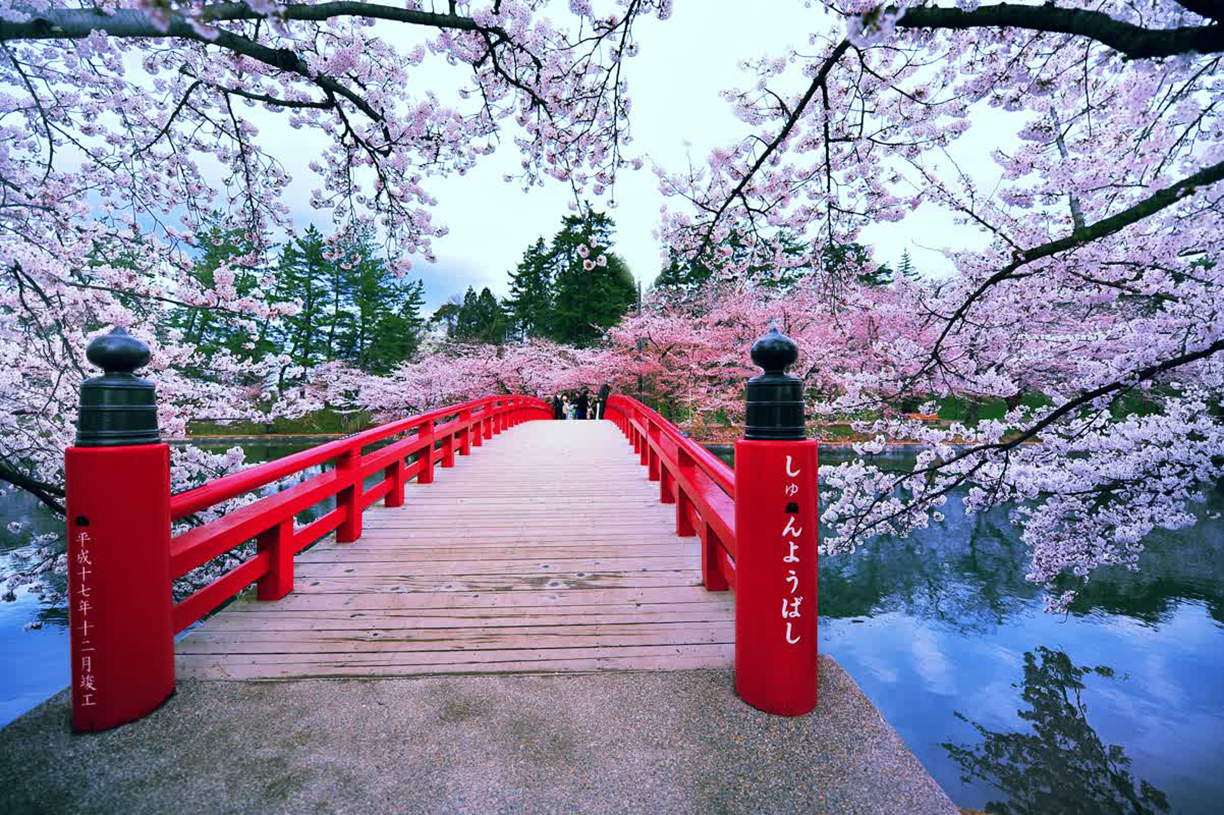
All photos courtesy Tourradar.com
Now that the holidays are over and business is back to usual, it’s time to get excited about where you’re traveling in 2020.
Unique Homes and Tourradar.com have rounded up all the buzziest destinations for the year ahead so you can start planning your next great adventure!
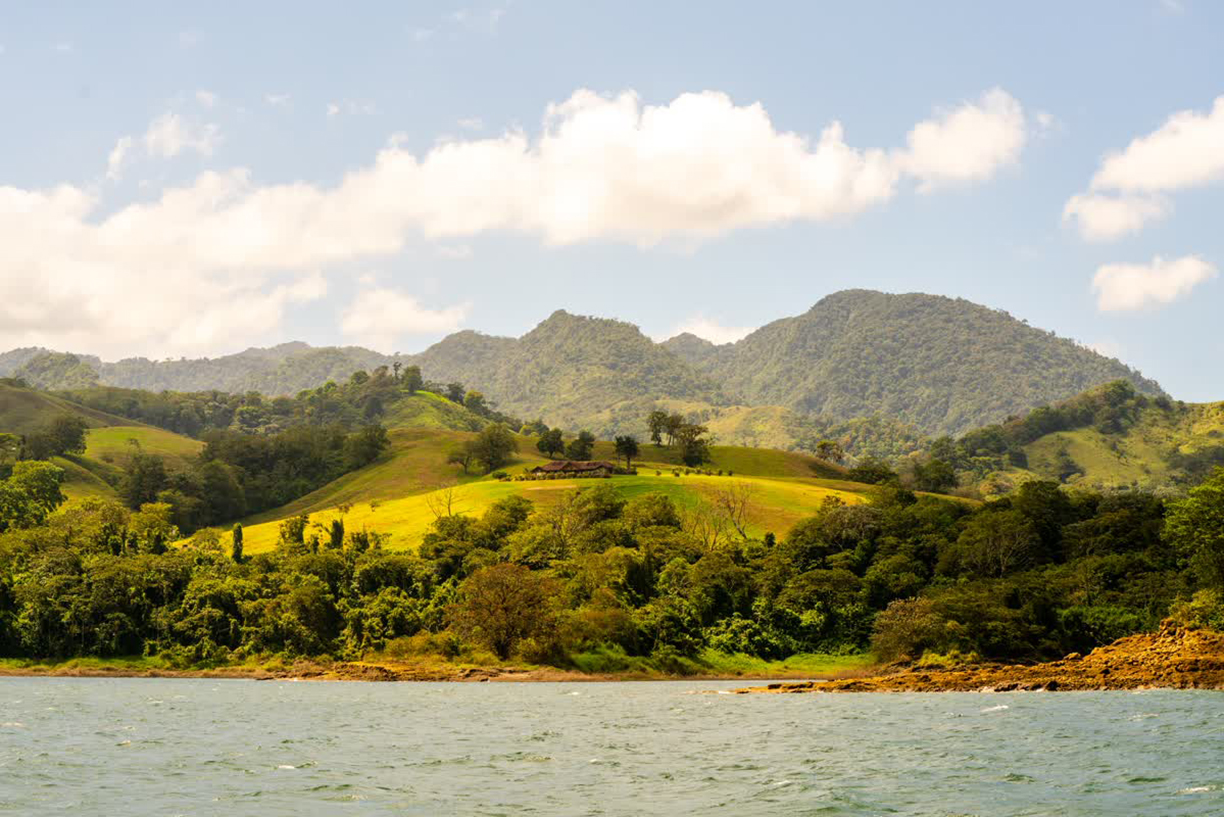
Costa Rica
If you’re hoping to reconnect with nature this year, Costa Rica is the answer. It’s where tropical backgrounds are the norm, as is exotic wildlife, robust coffee flavours and the relaxing wellness retreats waiting for travellers beachside.
Stroll across suspension bridges up in the forest canopy and find yourself completely and utterly face-to-face with Mother Nature while in the dreamy cloud forest region of the country in Monteverde. 90% of Costa Rica’s energy is created by renewable sources, and they’re on track to become one of the first carbon-neutral countries this year. Play your part by choosing to spend vacation time in a country that’s going above and beyond to make a difference to our global climate crisis.
Just in case activities like hiking volcanoes, surfing and zip-lining through lush hilltops isn’t your thing, Costa Rica is also home to cities tailor-made for an escape, from San Jose to Puerto Viego. While there’s something for everyone in Costa Rica, the natural beauty and jungle life definitely come first place.
Bhutan
It’s been a couple of years now that people have been talking about Bhutan and for good reason. The country proudly boasts a nearly untouched natural landscape that will stun even the most well-travelled among us. Already the world’s only carbon-negative country, taking a breath of fresh air means something entirely different in Bhutan.
Nestled tightly in the Himalayas, you’ll find plenty of mountain trails capable of delivering you some awe-inspiring views in Bhutan, like those of Paro Taktsang – also known as Tiger Nest – it’s an iconic sacred Buddhist monastery that sits cliffside. There’s also the chance to see ornate palaces from as far back as the 17th century and national parks that are home to rare and exotic wildlife like the Himalayan black bear and red panda.
If you’re hoping to make 2020 the year for some spiritual respite, a visit to the world’s real-life Shangri-La is in order.
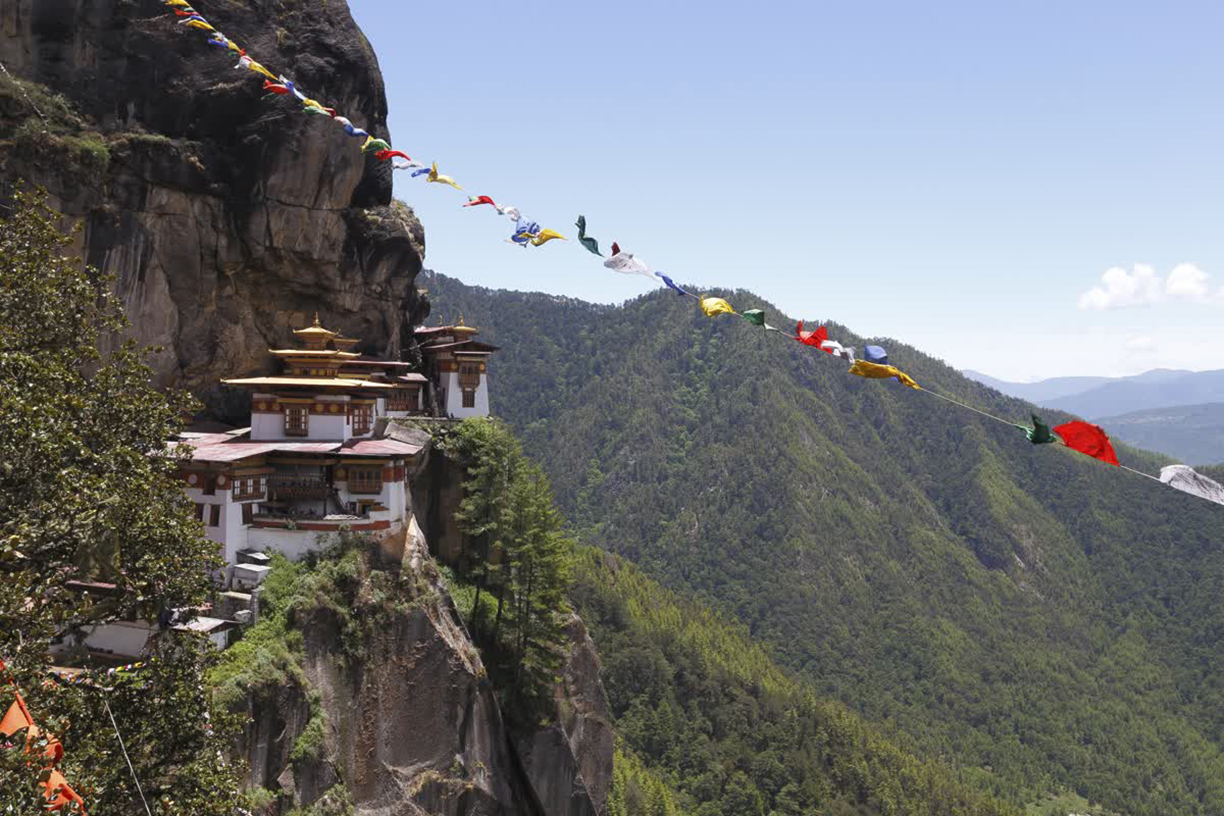
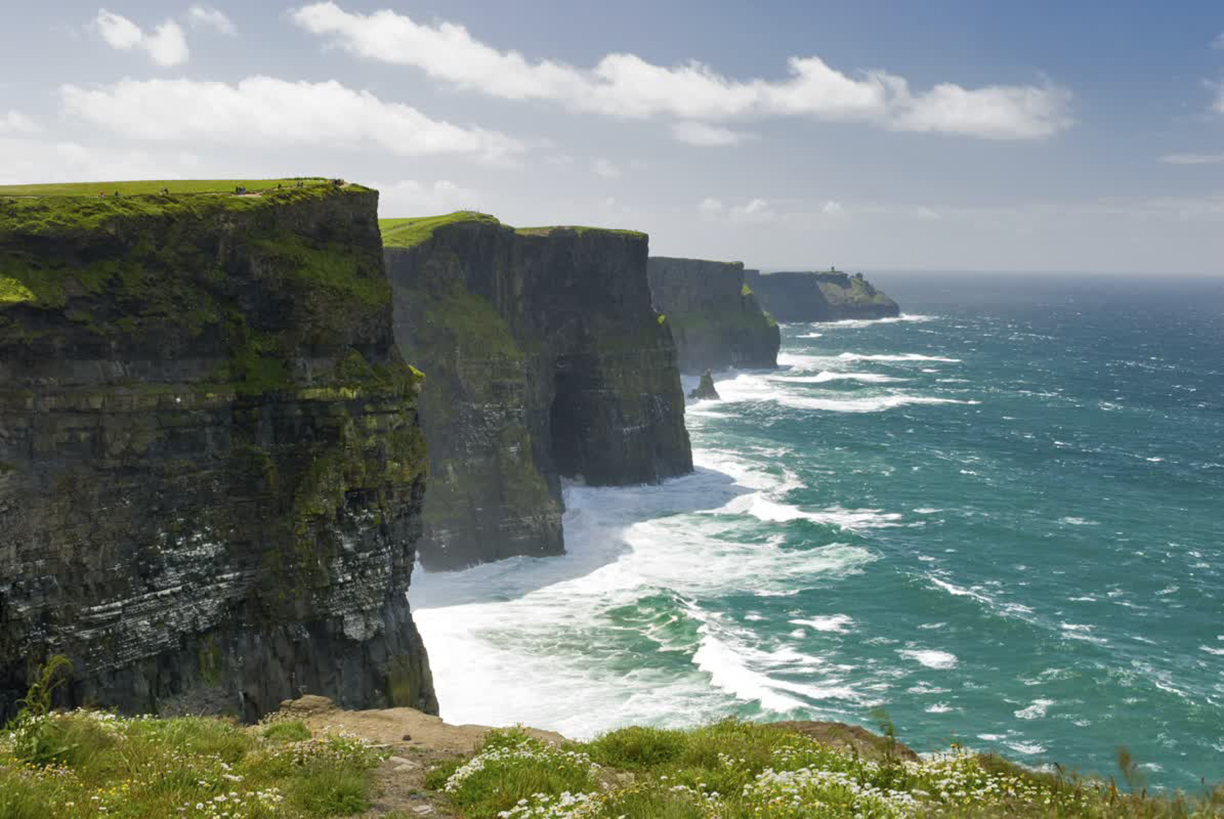
Ireland
Easily enjoyed in under a week, the Emerald Isle is full of pursuits that balance adventure, nature and history with ease.
The only road trip you’ll need for 2020 is along the Wild Atlantic Way, a 2,500-kilometer route that you can tackle in parts during your first visit. Embrace the elements along this sprawling route and enjoy discovering small-town life, coastal landscapes and secluded beaches across the country.
The sooner you visit, the faster you can start conquering your resolutions. Just make sure your trip itinerary includes a stop at the Blarney Castle where the famed Blarney Stone is located. As the legend goes, those who hang upside down and lay their lips on the stone is bestowed the gift of gab, which will help to ensure you get everything you want and more out of 2020.
Argentina
Home to one of the world’s most impressive networks of waterfalls, Argentina is teeming with extraordinary natural wonders that put travellers in the centre of it all. For example, visitors to the Argentina side of Iguazu Falls can enjoy kilometres of trails that will take you in and out of lush forests and within arm’s reach of the waterfalls themselves. If you’re in search of something a little cooler, then Glaciar Perito Moreno will not disappoint. You can witness the soaring beauty of this glacier in Los Glaciares National Park. And thanks to the park’s extended network of steel catwalks and platforms, Perito Moreno is one of the world’s most impressive and accessible glaciers.
You want a city escape with fiery music, and experimental takes on classic dishes, Buenos Aires, the country’s capital, is an essential stop on your 2020 adventures. Argentinians know their way around beef, and their steaks will wow your tastebuds. You can end your night in Buenos Aires by visiting a tango bar and working off your dinner in a flurry of dance moves taught to you by local experts.
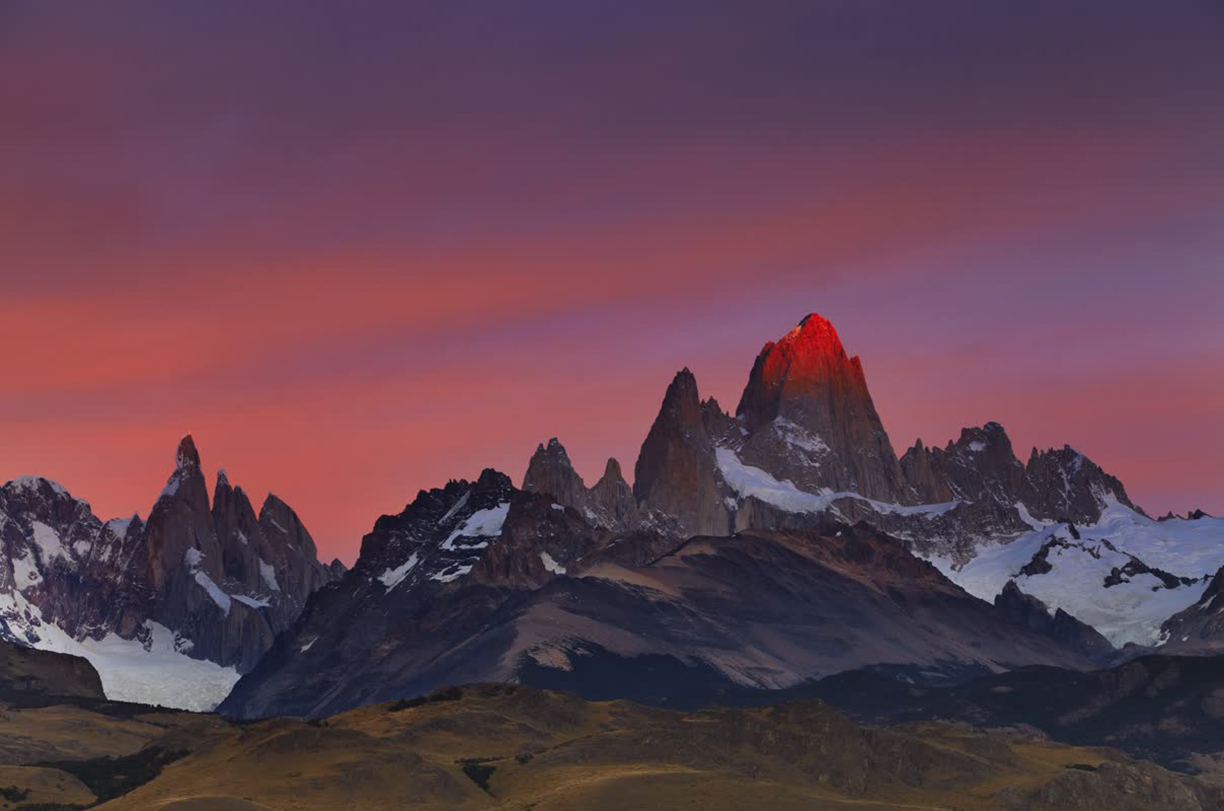
Looking to include world-class wine? Just head to Mendoza (Argentina’s wine country). You can learn how the grapes are grown and cared for in the thick of it all. We promise once you’re walking alongside the farmers, hearing their stories firsthand, a glass of Malbec will taste all the more satisfying.
Want to learn about other potential travel destinations? Visit Tourradar.com for more opportunities!
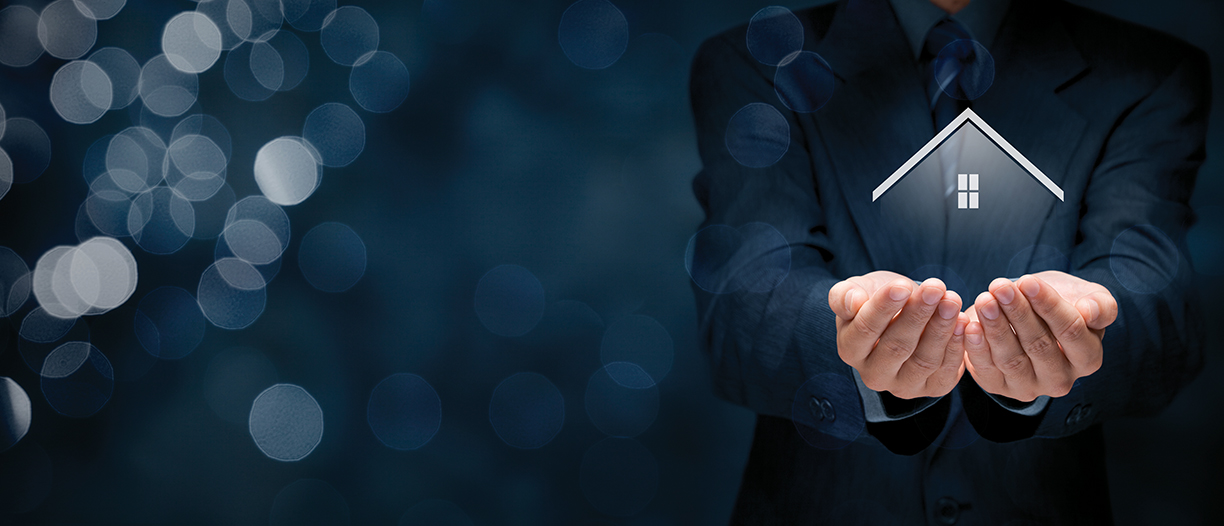
©istockphoto.com / Jirsak
The luxury real estate outlook for the coming decade includes understanding millennials and dealing with low inventories.
A new year and a new decade prompts pundits to dust off crystal balls and prognosticate on what’s ahead. But experience teaches us that vision is not always in focus.
To illustrate her perception of luxury in 2020, Stephanie Anton, president of Luxury Portfolio International, points to Pantone’s color of the year, a classic blue symbolizing protection, sustainability, peace and confidence. “That’s exactly how I feel about the market. It’s going to be a peaceful year, solid, with nothing dramatic happening.”
Others might agree with Julie Leonhardt LaTorre, COO for Sotheby’s International Realty Affiliates, who says, “The U.S. luxury property market has never been as exciting as it is today. While certain real estate markets are currently experiencing some softening, others are seeing an uptick in sales.”
“It’s a time of change,” says Craig Hogan, vice president, Coldwell Banker Global Luxury. In hindsight, there is a good chance 2020 will be viewed not as a year of spectacular sales or an unusually strong market, but rather as pivotal — the year in which millennials became real estate influencers, sparking a transformation more significant and substantive than simply sales or the number of transactions. The turnover from baby boomers to millennials will take more than a decade to complete and will impact all facets of real estate from design to communication to how transactions are conducted.
Looking Back
When the last decade began, there was only one certainty for real estate: we were in a recession, perhaps the worst crisis since the Great Depression. Tentative hints of a recovery arrived with the new year, but as the decade unfolded, it was clear the worst was not over. “Bumping along the bottom” became a catch phrase to characterize the long, slow recovery. By decade’s end, almost all markets were back to or had surpassed pre-recession values. A few became hot markets with a surge of new residential property and skyrocketing values followed by another period of adjustment. Many others bounced by and remained hot markets through the end of the decade. By early 2019, the possibility of another downturn loomed as some economists and housing experts bet a recession was waiting in the wings.
Today, a few clouds hover over some forecasts, but expectations are the economic expansion, the longest in history, will continue. Jobs, the economy and continued low interest rates continue as positives. For real estate, the year ended on an upbeat as markets revived in the second half. Still, a lack of inventory continued to hamstring sales with only a 3.9-month supply of homes on the market at the end of October, down from 4.3 months recording October 2018. Noting that residential construction is still under-building to meet demand, Rover Dietz, NAHB chief economist, points to higher development costs, which, he says, “are hurting affordability and dampening more robust construction growth.”
The median existing-home price for all housing types in October was $270,900, up 6.2 percent from October 2018. October’s price increase marks almost eight years, 92 straight months, of year-over-year gains.
The probability of a recession in 2020 is 29 percent, according to 14 housing economists and experts gathered by the National Association of Realtors (NAR) in December for a forecast summit. They project a 2.0 percent increase in GDP in 2020 and 1.9 in 2021. Annual median home prices are expected to increase by 3.6 percent in 2020 and 3.5 percent in 2021.
“Real estate is on firm ground with little chance of price declines,” said NAR’s Chief Economist Lawrence Yun. However, Yun cautioned that lack of inventory, not enough for sale homes to meet demand, was still a detriment. “In order for the market to be healthier, more supply is needed to assume home prices as well as rents do not consistently outgrow income gains,” he explained.
Year-end bought more positives with an increase in builder confidence for single-family construction, the highest point since June 1999, according to the National Association of Home Builders (NAHB)/Wells Fargo Housing Market index. “Builders are continuing to see the housing rebound that began in the spring, supported by a low supply of existing homes, low mortgage rates and a strong labor market,” said NAHB Chairman Greg Ugalde, a home builder and developer from Torrington, Connecticut.
New Markets to Watch
In recent years, a big change has been the migration of luxury to secondary markets such as Denver and Houston. This year, Jacksonville, Charlotte, Nashville, Cincinnati, Boise, and Kansas City were added to the luxury orbit, according to the Institute for Luxury Home Marketing.
Looking ahead, John Brian Losh, chairman and publisher of LuxuryRealEstate.com, believes that all of the fundamentals for a positive year for real estate are in place. “I think nationally it couldn’t be better. The economy is booming. It’s an election year, and people don’t want to raise taxes during an election year. It’s rare to have a slowdown during an election year. The luxury market is all about consumer confidence. If confidence is high, the market will stay strong.”
Still, some media reports portray luxury sales in freefall, particularly from Manhattan, which is finding new ground after a mid-decade surge in prices, or L.A.’s tony Westside enclaves, where a spate of speculative development pushed prices to unjustified levels. Yet, Manhattan and Beverly Hills both posted sales that set record prices in 2019.
I think nationally it couldn’t be better. The economy is booming. It’s an election year, and people don’t want to raise taxes during an election year. It’s rare to have a slowdown during an election year. The luxury market is all about consumer confidence. If confidence is high, the market will stay strong.
“What’s interesting is what we’re hearing and feeling is not as bad as we hear in the media,” shares Anton, following a recent two-day summit with 15 leading brokers.
Something Meghan Barry, president at LuxuryRealEstate.com, has heard this year from more than a few agents is they are having their best year ever.
While Anton agrees “there is definitely a softening in luxury generally,” she also points out, “There are bright spots. It’s not a horror story. Things are flat year over year, and as we look to the coming year, we think it’s going to be the same.”
Lesli Akers, president, Keller Williams Luxury International, sees the growth of inventory as a positive. “We’re starting to see more supply and we need to. It’s not moving into a buyer’s market. It’s moving more into an adjusted market. I think the luxury market is strong now.”
Heading into 2020, there are also a number of encouraging indicators for luxury from a continued vibrant global market to a surge of demand for second-home and resort properties. “With the creation of new wealth around the world, cities like New York City, London and Dubai, just to name a few, will continue to thrive in the luxury arena,” says Johnson.

London
©istockphoto.com / sborisov
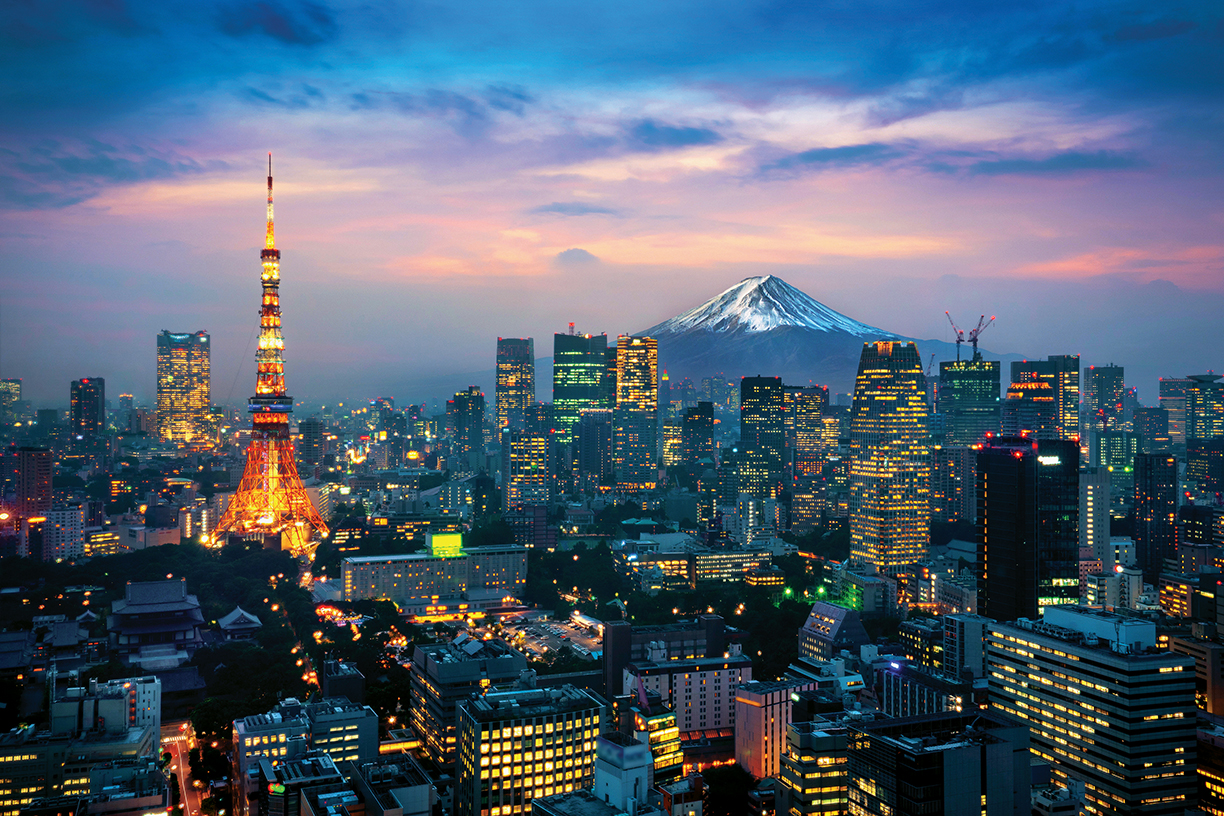
Tokyo
©istockphoto.com / tawatchaiprakobkit
“We have been seeing a strong increase in demand in Dubai’s super-prime segment, with transaction volumes increasing by 81 percent year-to-date in the second quarter, compared to the same period last year. The mainstream market over the same period saw a 2.2-percent decline, although since then the wider market has seen increased transaction volumes, increasing 11.1 percent year-to-date in August over the same period last year,” says Dounia Fadi, chief operating officer, Berkshire Hathaway HomeServices Gulf Properties.
“Some of the hot markets that are emerging globally are Canada, Japan, Portugal and New Zealand,” says LaTorre. “Canada continues to generate strong interest. Specifically, Vancouver, which is steadily regaining momentum, experiencing the greatest gains in year-over-year employment growth among Canada’s three largest census metropolitan areas, so confidence in the city’s fundamentals remains high. There is a strong focus on Tokyo, especially with the Olympic games in 2020. It’s currently on a world spotlight.”
In London, prices are down, and the general property market has slowed. But the luxury market, which Martin Bikhit, managing director at Berkshire Hathaway HomeServices Kay & Co. describes as “certainly bottomed out,” is reviving with buyers returning to the market. It’s still a buyers’ market, which creates new opportunities for investors and foreign buyers. Bikhit sees Americans and others from countries with currencies pegged to the U.S. dollar taking advantage of prices and exchange rates offering savings of 45 percent compared to the 2014 market peak.
“International buyers are using the currency play to their advantage and timing their investments accordingly. Therefore, we are seeing a number of international buyers looking to buy in the UK,” says LaTorre. And, she adds, “we’re still seeing foreign interest in the U.S. luxury market.”
Hot luxury locales this year were resort markets, and the passion for get-away properties or the new family gathering spot is not expected to change soon. “The preferences of the consumer have changed dramatically. We’re seeing wealthy millennials are particularly interested in purchasing second homes,” says Anton.
Tax policies also came into play this year in a big way and expectations are they will continue to shape demand and bring more interest to low tax states such as Texas and Florida. Expectations are taxes and government policies will remain motivations for buyers. “The weather, the climate and taxation have a lot to do with where people move, especially in this economy,” says Losh.
Not only are more consumers migrating to lower tax states, but Hogan says an increasing number of agents are licensed in two states such as Illinois and Arizona or New York and Florida. “We have always had people with dual licenses. Now we have agents who have established a presence and market themselves as having offices in two locations.”
Many are also revising their acquisitions too. “People are looking for multiple small properties instead of one large property,” adds Anton.
In the last year and a half, both Coldwell Banker Global Luxury and Luxury Portfolio International conducted research into millennial attitudes and the potential influence of this cohort on luxury market. “The buyer pool has changed. In the luxury space, we’re now faced with people with different expectations, different styles of communication and different experiences,” Hogan says.
Already evidence of the transition from boomers and Gen X to millennials can be seen. By spring 2020, millennials will account for more than 50 percent of all mortgage originations, according to George Raitu, senior economist at Realtor.com. By 2030, Wealth Engine and Coldwell Banker Global Luxury estimate millennials will hold five times as much wealth as they do today.
Currently, the number of wealthy millennials in the luxury market may be small, but they are extremely influential. For one thing, Hogan says, they are buying more real estate than their parents. “They own an average of three homes, while their parents own an average of 1.4, and they’re spending more money.”
Overall, millennials are defying earlier predictions by starting families, moving out of urban neighborhoods and owning cars. What’s ahead is uncertain, but agents and brands are preparing for dramatic changes in the industry overall.
THIS ARTICLE ORIGINALLY APPEARED IN THE WINTER 2020 ISSUE OF UNIQUE HOMES. TO SEE THE DIGITAL VERSION OF THIS STORY, CLICK HERE.
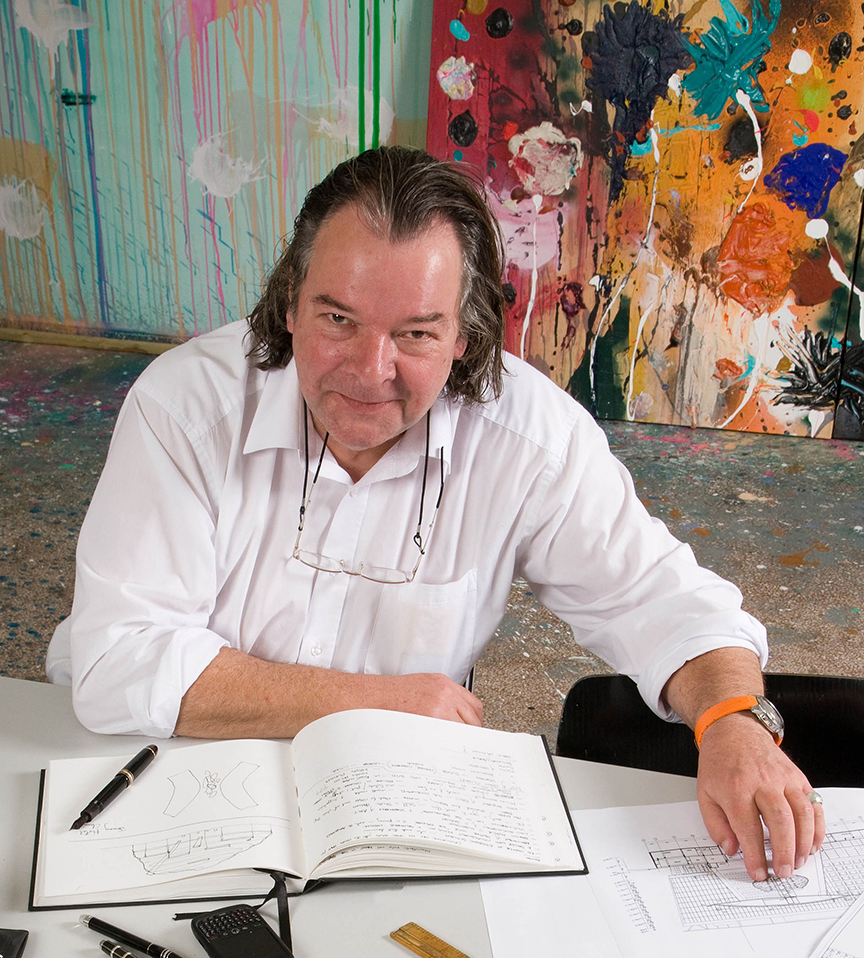
Headshot image courtesy of Malcolm Crowther
British architect Will Alsop recently passed away at the age of 70, leaving behind a legacy that encapsulated a variety of architectural styles throughout Britain and Canada. According to his studio’s website, all Design, Alsop’s core values were innovation, expression and originality with an emphasis on enjoyment, to ultimately “make life better” by designing individual buildings or spaces that embrace broader principles of urbanism and city development. To further this philosophy, he often used painting, writing and “playing” to further an understanding of design.
In cities like Toronto, London, and Hamburg, many projects completed by Alsop can be defined through colorful and striking details that both stood out and completed the surrounding community. Below we’ve listed several of his projects that emphasized his values.
North Greenwich, Finch West and Pioneer Village Stations
Alsop partnered with John Lyall and Jan Störmer in 1999 to complete the North Greenwich station of the London Underground. This station boasts a tiled interior with striking cobalt-blue columns, inspired by the design of Mass Transit Railway stations in Hong Kong.
The architect also had a hand in several stations “across the pond” in Toronto, Canada. While the Pioneer Village station features irregularly-shaped chandeliers and a dramatic outdoor canopy, the Finch West station is, by contrast, “a happy assemblage of brightly coloured glass panels,” according to Simon Lewsen of Azure Magazine.
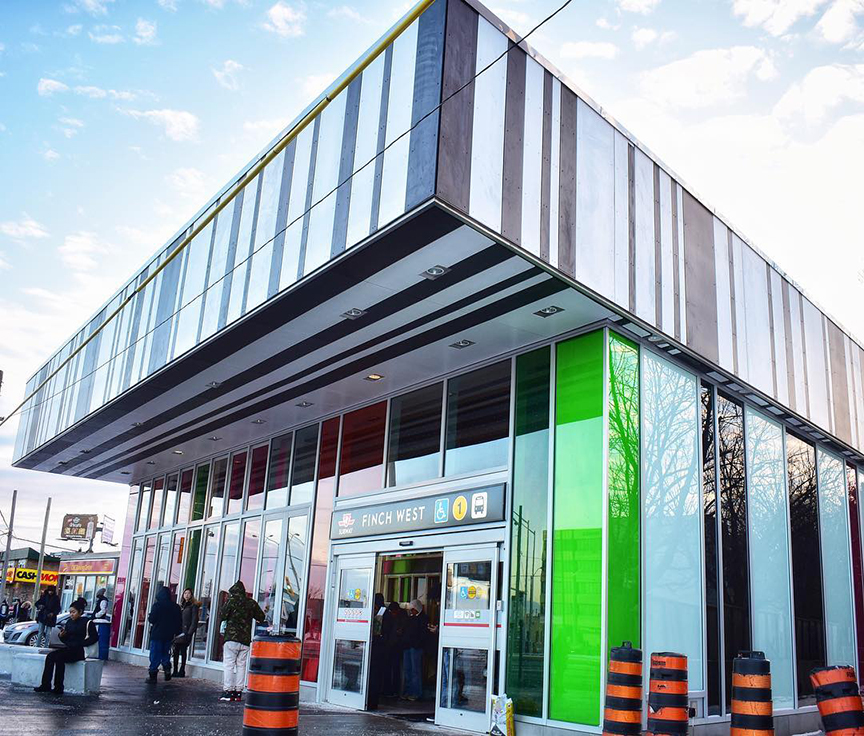
Courtesy Jason Paris
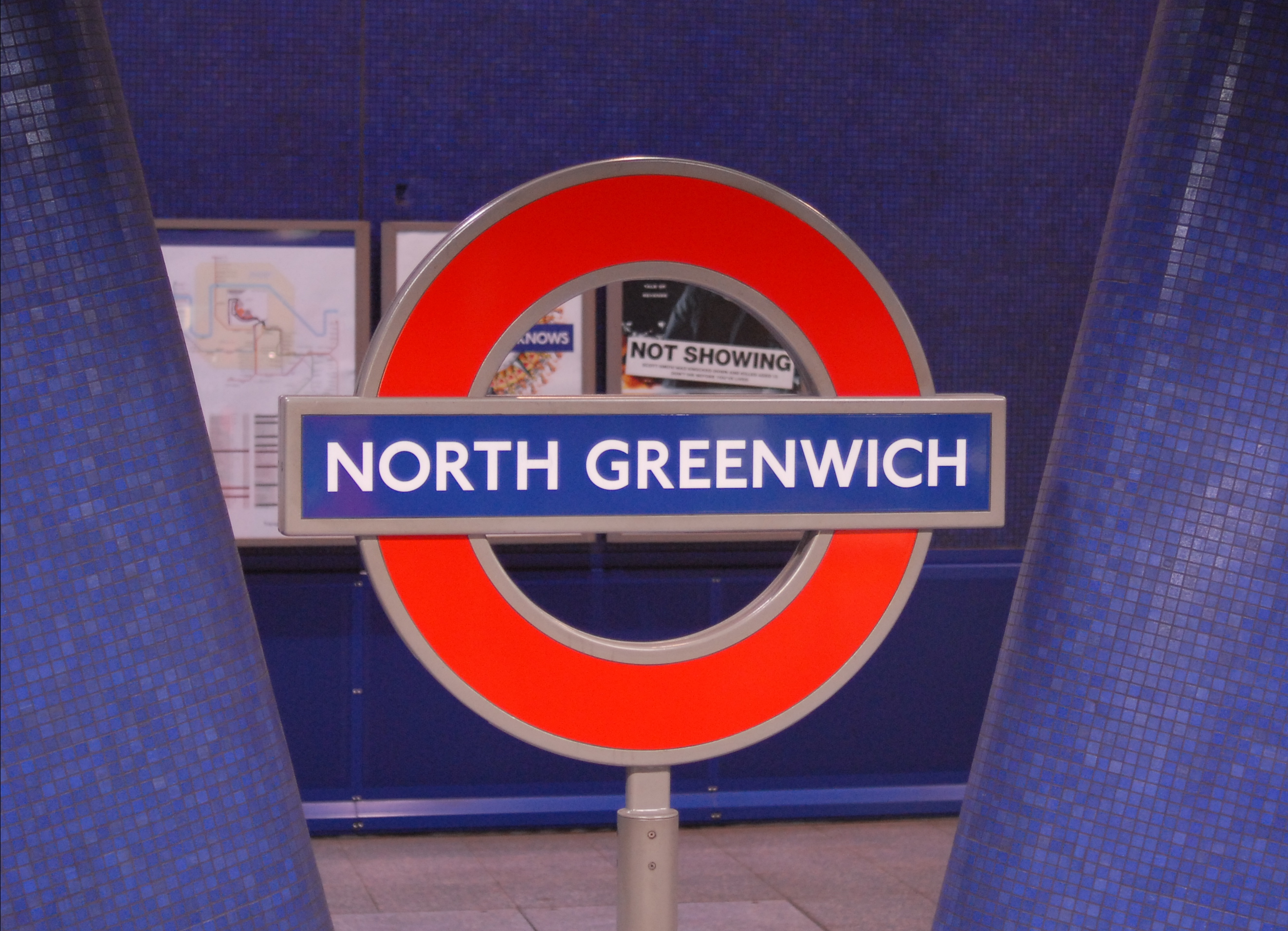
Courtesy Mike Knell
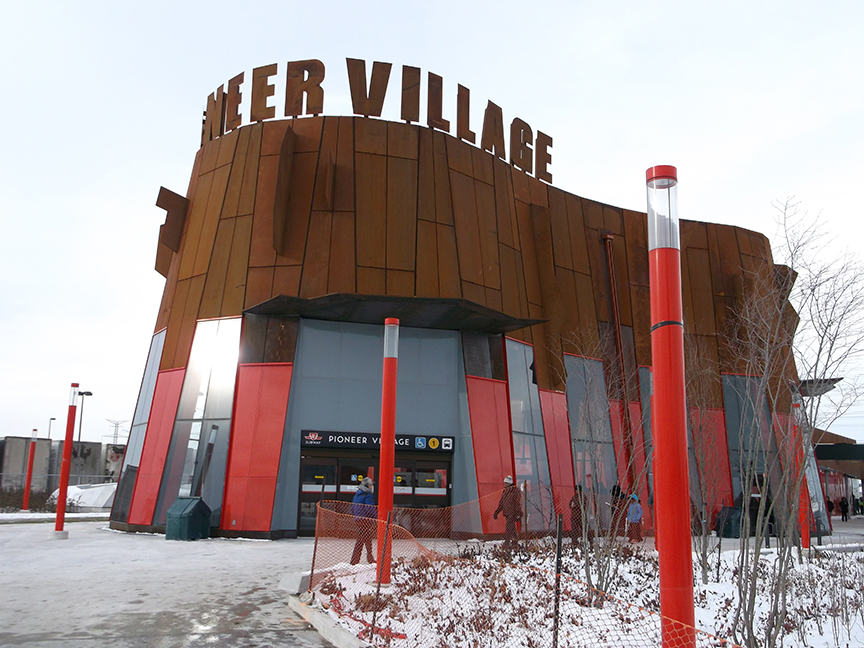
Courtesy Wikimedia Commons
Sharp Centre for Design, OCAD University, Toronto
Alsop’s design for OCAD University’s Sharp Centre features a large checkerboard slab centered above a school building atop tilted, multi-colored pillars. The $42.5 million expansion and redevelopment received numerous awards, including the first Royal Institute of British Architects Worldwide Award, the award of excellence in the “Building in Context” category at the Toronto Architecture and Urban Design Awards, and further redefined the university and the surrounding neighborhood.
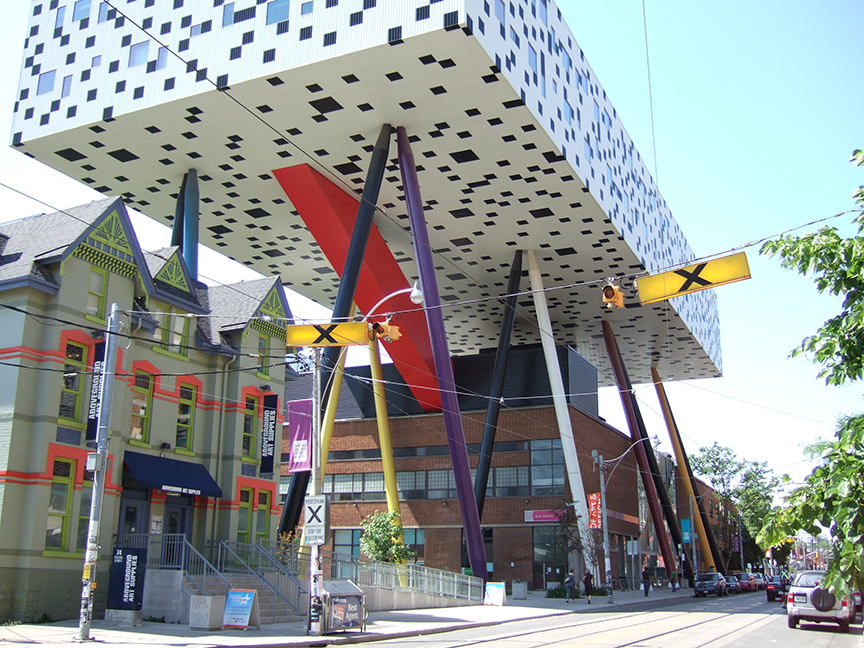
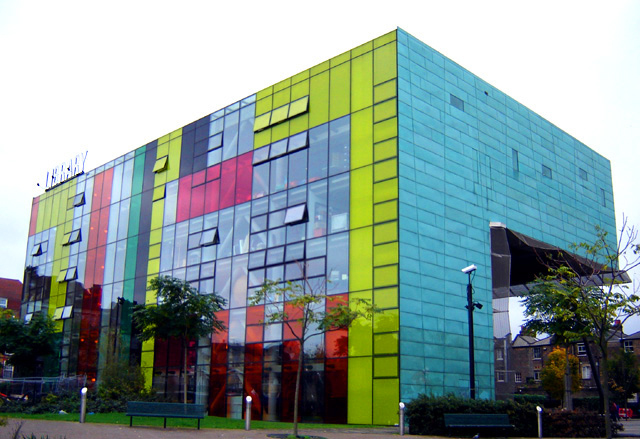
Peckham Library, London
Opening in 2000, the Peckham Library in south-east London features pre-patinated copper and is shaped like an upside-down capital L. The top section of the structure, an elevated reading room expertly set above the noise of the street, is supported by slender steel pillars set at different angles. Winning the Stirling Prize for Architecture that year, Peckham Library was the project that heralded Alsop as an iconic architect.
Kettal’s outdoor decoration collection includes a wide variety of products, ranging from planters and fire pits to floor lamps and side tables.
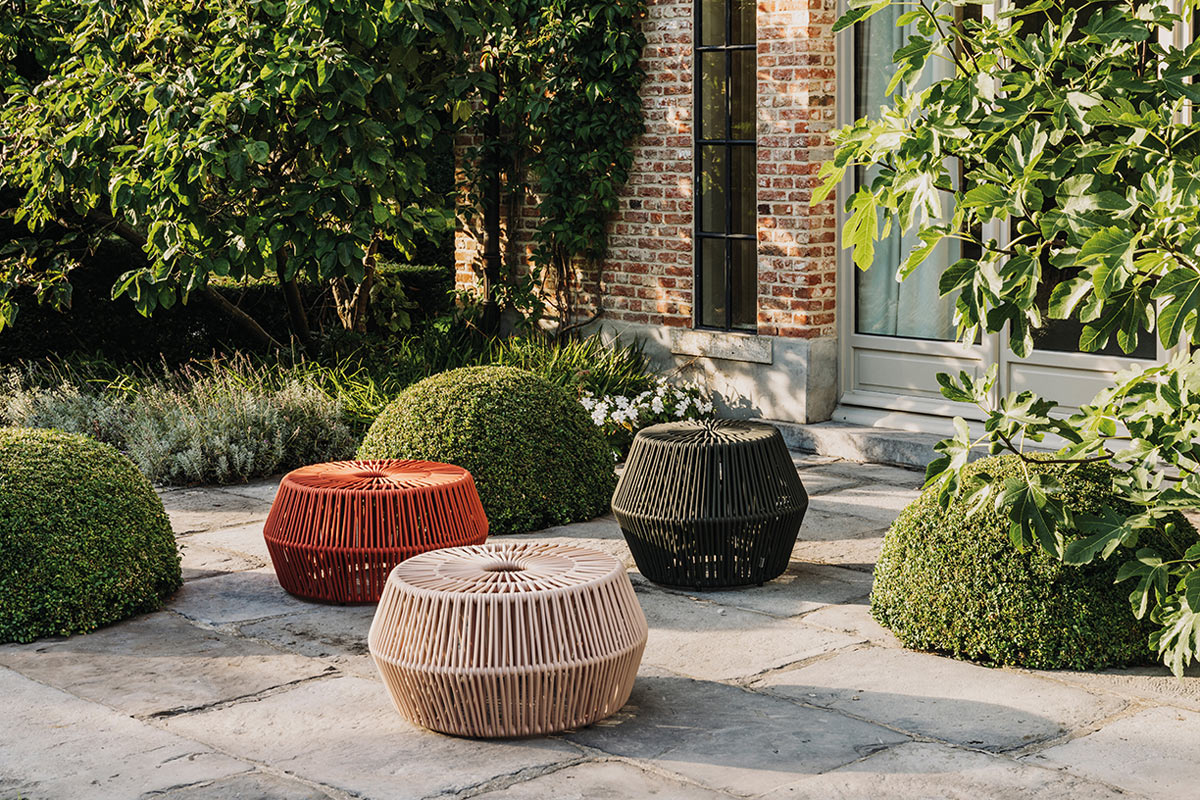

Kettal, a designer and manufacturer of timeless outdoor furnishings for home and commercial uses, has developed a range of exterior decoration and design products in its new puff design and rope collection, Kettal Objects.
Kettal Objects is a range of outdoor decoration products, which includes puffs, planters, fire pits and oil lamps designed by Emiliana Design Studio. Emiliana Design Studio was set up by Ana and Emili in Barcelona in 1996 after they graduated from London’s Central Saint Martins College of Art and Design. Their work is characterized by its ability to give each project a fresh conceptual approach, experimentation with materials and for proactively involving the user without compromising functional, technical or production aspects.
Kettal has extended its new collection with the introduction of a new puff, constructed of aluminum and one of the ‘Bela Ropes’ 17-color rope range designed by Doshi Levien. Doshi Levien is an internationally acclaimed design studio founded by designers Nipa Doshi and Jonathan Levien. The two designers have been working together for more than ten years in their London-based design studio.
The Kettal Objects collection also includes a sideboard, room divider, floor lamp, parasols, side table and tray by Kettal Studio, an oil lamp and fire pit by Emiliana Design Studio, candleholders and outdoor rugs (200 x 294 cm) by Patricia Urquiola, rugs (200 x 300 cm and 300 x 400 cm), terrain cushions and geometrics fabrics by Doshi Levien and three models of lamp — floor, table and battery-powered — by Michel Charlot.
Photos courtesy of Kettal


